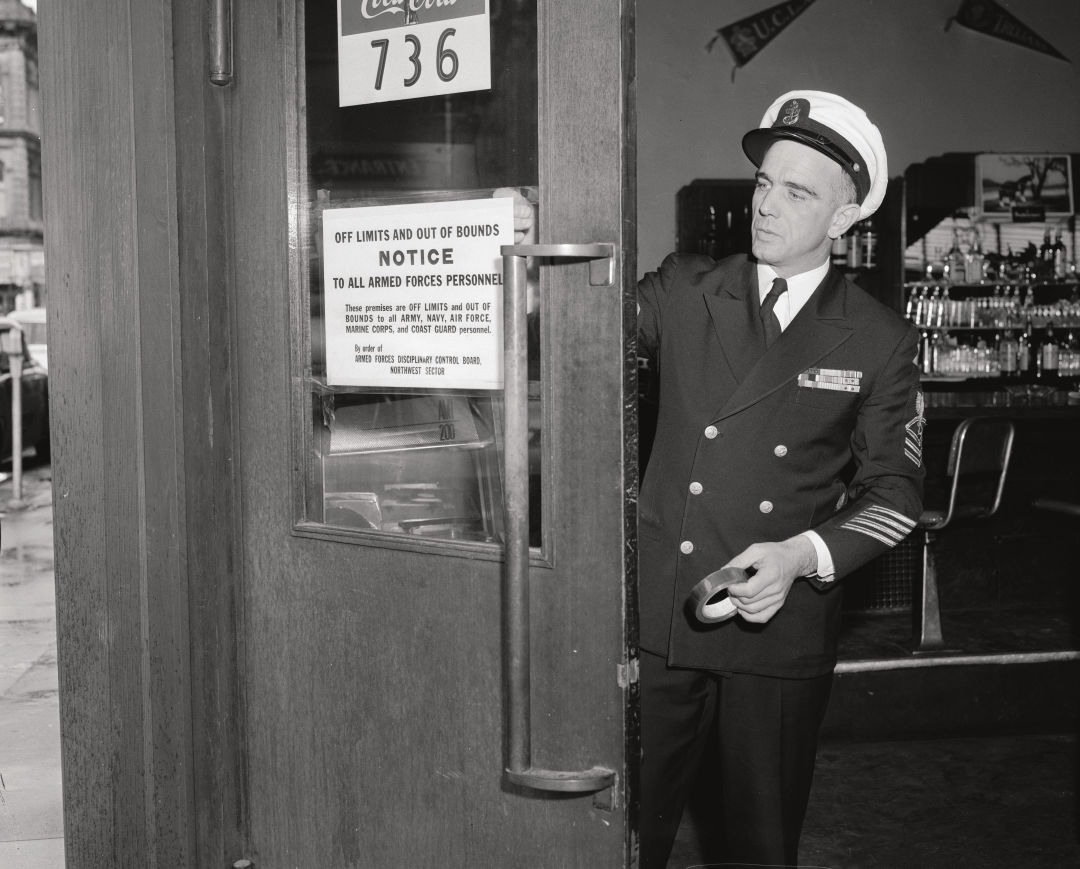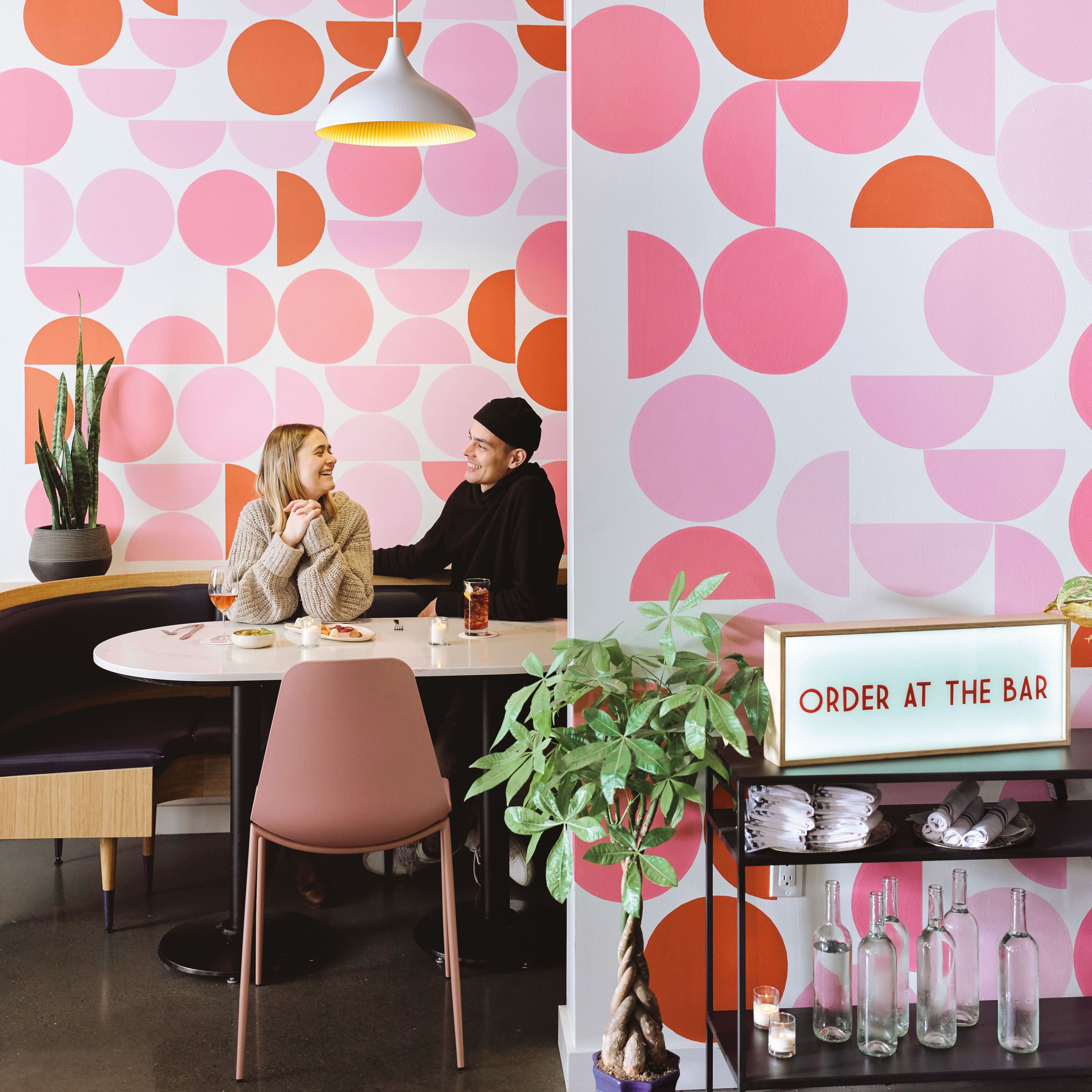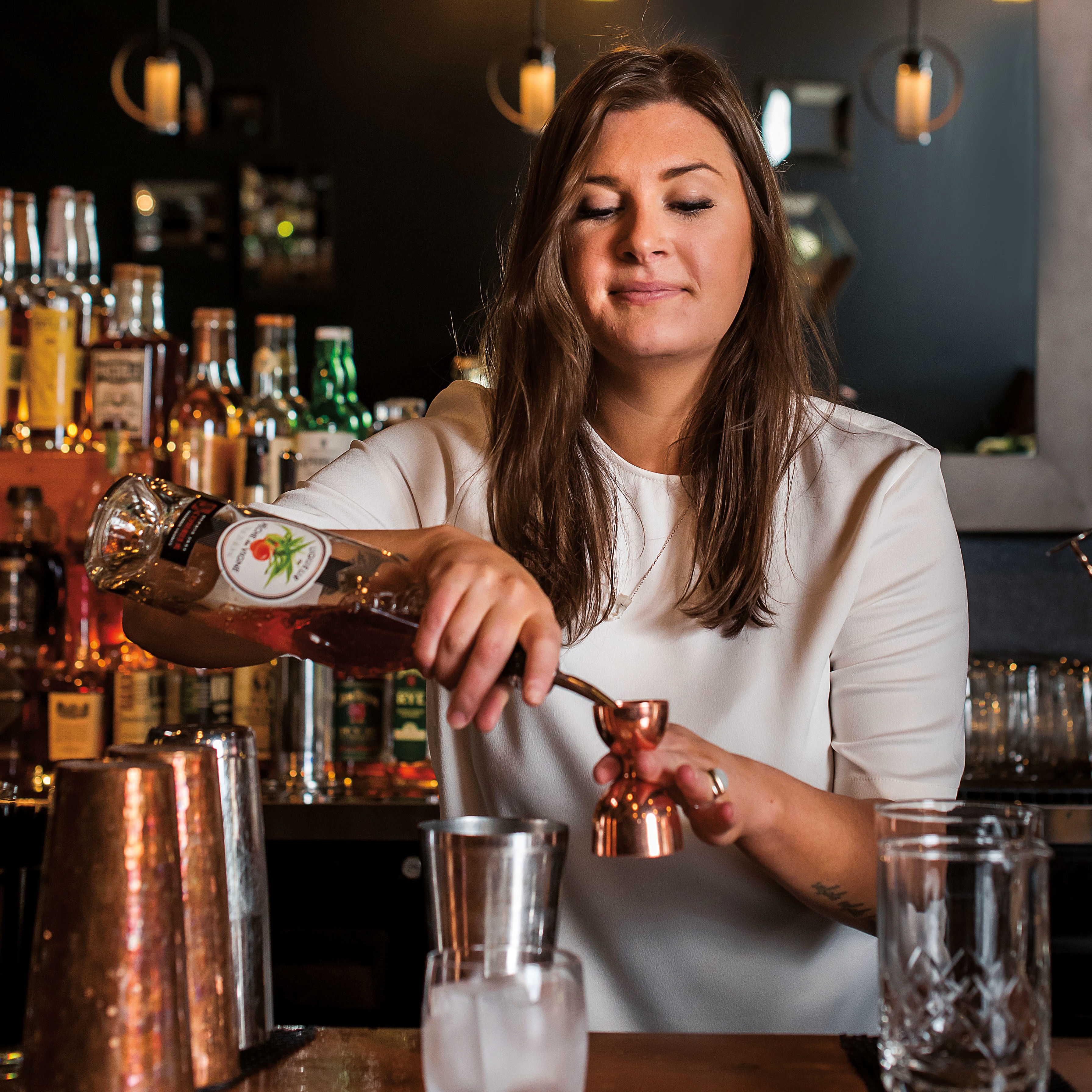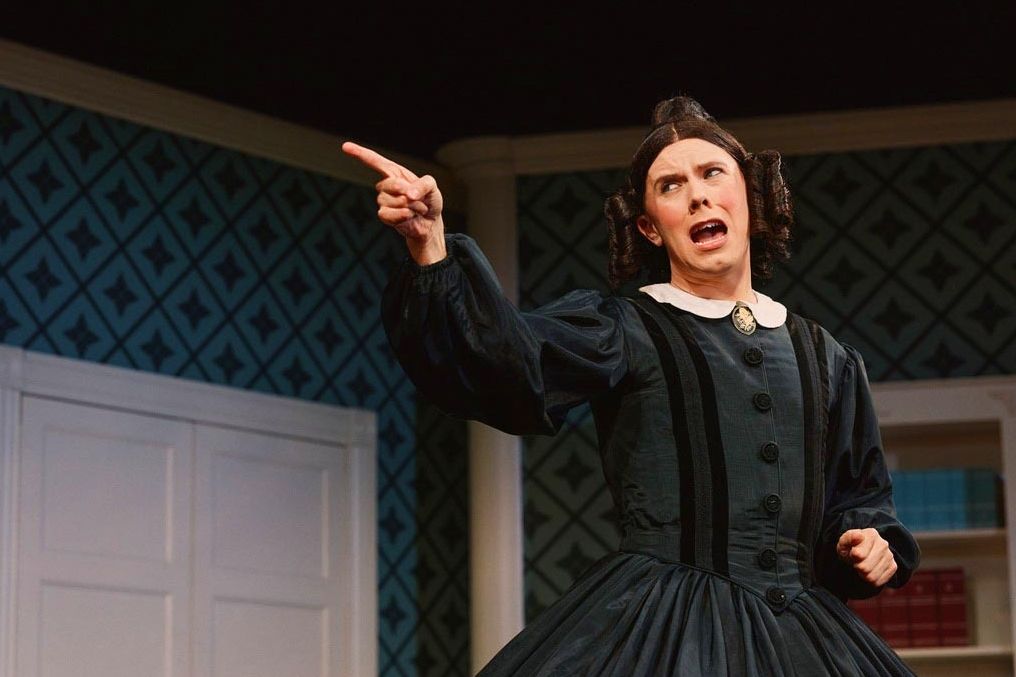Living as a Young Queer in Post-Vaseline Alley Portland

The Harbor Club, in 1957
When I was 15, I went on my first date with another boy. A mutual friend set us up, accompanied us to the Tea Chai Té on NW 23rd, and scurried away. I don’t remember where, exactly, the bulk of the date took place, but we ended at the McDonald’s on West Burnside, where we kept almost-kissing and I got ketchup on my scarf.
What I’m trying to say is this: I got to be gay in places plenty of people before me did not get to be gay. Mundane places. In college, I kissed men in public more often than I kissed them in darkened dens of iniquity. (Not discussing the implications of that sentence, Mom.) You don’t need me to cite any milestones to prove being a gay white guy in America has become a lot easier in the past decade and a half, but a strange byproduct of that ease is a slight sense of dislocation. To invert the adage: when something’s gained, something’s lost.
I moved back to Oregon last spring. Embers, the beloved Old Town dance club that carried generations of queers above me through Nixon and beyond, had been closed a little over a year. In my first few months at home, I went to a drag show at the Local Lounge on MLK and hit Pride events at Crush in inner Southeast. I wasn’t exactly starved for community, but still, I had a lingering sense I’d just missed a party that had been rolling for decades.
By most accounts, Portland’s first gay bar was the YMCA. In 1912, Benjamin Trout was arrested on shoplifting charges and threw a legendary Hail Mary: he’d been corrupted, he said, by sodomites, many of whom lived at the YMCA downtown at Sixth and Taylor. Local authorities wound up arresting more than 15 men—Oregon’s sodomy law wouldn’t be repealed for another 60 years—in what came to be known as the Vice Scandal of 1912.
In the mid-20th century, the scene hit its stride. The Harbor Club, a dive by the water at First and Yamhill, was deemed so seedy US armed forces forbade visiting members from patronizing it. Darcelle XV, the beloved drag club now home to more bachelorette parties than twinks, opened in 1967. Embers opened in 1969 and was a raucous favorite until it shuttered. By the ’90s, the stretch of SW Stark between 10th and 14th had earned the nickname Vaseline Alley, an as-crude-as-it-sounds moniker that honored legendary cruising spots like the Eagle, Silverado, and Scandals.
By 2018, an imprecise mix of rising rents and assimilation had largely killed Vaseline Alley, and downtown's section of Stark was renamed Harvey Milk Street in memoriam. The Eagle lives on as a gruff North Portland leather bar, Silverado relocated from downtown to Old Town, and Scandals has held down its real estate next to the Roxy even as the view has come to include New Portland milestones like the Ace Hotel and Bamboo Sushi.
I walk past Scandals most days on my way to lunch. I find it comforting and more than a little sad—there I sit on my phone, sometimes chatting with other gay men while I wait for fast-casual poké. Across the street are stray guests from that decades-long party whose invite I never snagged.
I don’t want to sound ungrateful. The “party,” of course, was mostly gutsy, hard-fought protest. More has been gained than I could possibly realize.
But still. Something’s lost.








